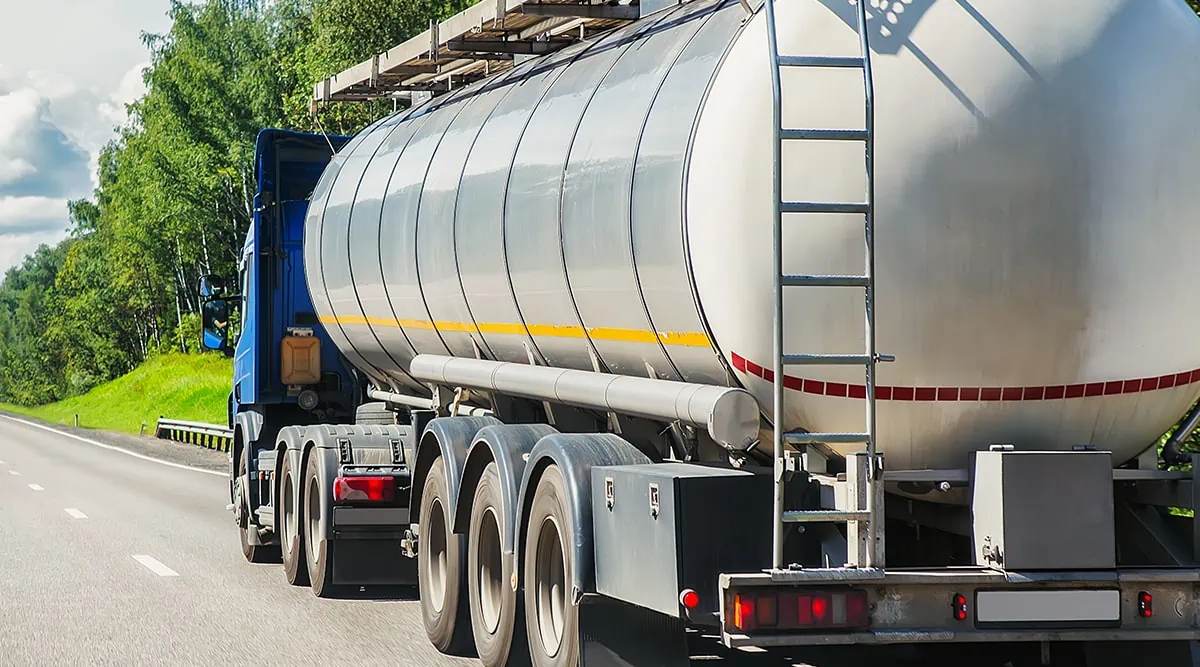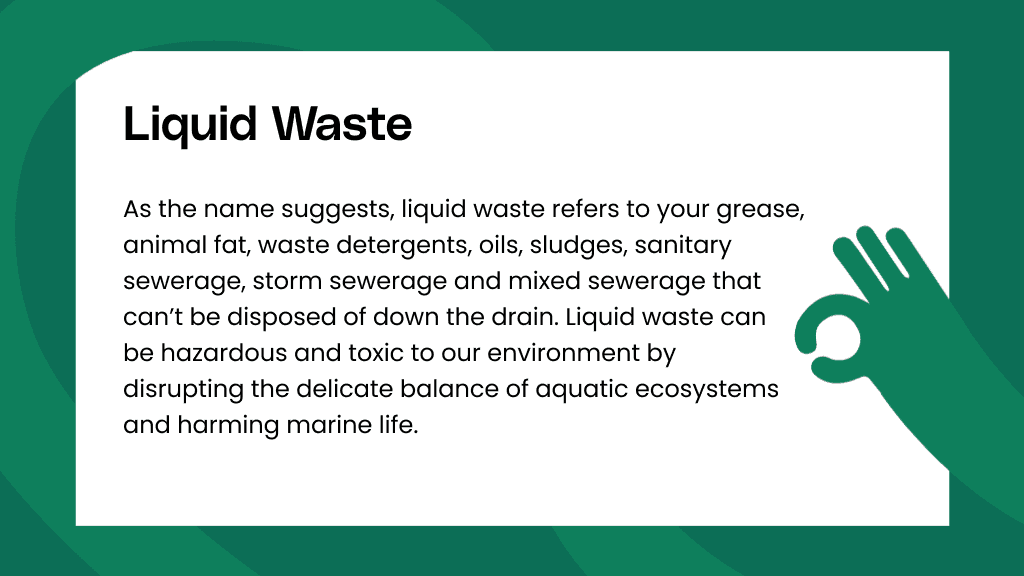Reclaim Waste Can Be Fun For Everyone
Reclaim Waste Can Be Fun For Everyone
Blog Article
Reclaim Waste Things To Know Before You Get This
Table of ContentsNot known Factual Statements About Reclaim Waste Examine This Report on Reclaim WasteThe Ultimate Guide To Reclaim WasteThe smart Trick of Reclaim Waste That Nobody is DiscussingThe 8-Second Trick For Reclaim Waste
Discover the types, incidents, and types of liquid waste. Domestic sewage waste describes the waste and products from a property sewage-disposal tank. This type of waste is developed by human beings in homes, schools, and various other buildings. This only includes sewage-disposal tanks that have a drain area. The proper monitoring and disposal of domestic sewage waste need fluid waste to be transferred to a sewage treatment plant where the correct techniques and equipment are related to cleanse and dispose of waste.
Commercial waste frequently consists of prospective risks, such as combustible materials or a blend of fluid and strong waste products, and calls for a much more innovative and detailed disposal process. The disposal of industrial waste normally entails the filtering of waste prior to transportation to make certain secure and correct disposal. Industrial waste is developed from byproducts and runoff of commercial procedures and production.
This kind of waste can not use the very same sewer management transportation or procedures as septic or business fluids. The industrial waste administration procedure requires the evaluation and screening of fluid waste prior to it undergoes the disposal process (industrial wastewater treatment). Runoff waste is the fluid waste that comes from overflow and excess stormwater in extremely populated locations or cities
Runoff waste can create contamination and flooding if not handled properly. Making certain correct waste monitoring can prevent disasters and reduce environmental harm.
The Reclaim Waste Statements
Call PROS Providers today to learn regarding our waste monitoring and disposal services and the appropriate ways to take care of the fluid waste you create.
(https://writeablog.net/reclaimwaste1/reclaiming-resources-a-comprehensive-guide-to-industrial-wastewater-treatment)This supposed 'wastewater' is not just an essential source but, after treatment, will be launched to our land, rivers or the sea. Made use of water from bathrooms, showers, bathrooms, kitchen area sinks, laundries and industrial processes is recognized as wastewater.

water utilized to cool down equipment or clean plant and equipment). Stormwater, a type of wastewater, is overflow that streams from agricultural and city locations such as roof coverings, parks, yards, roadways, paths and gutters right into stormwater drains, after rainfall. Stormwater moves without treatment straight to local creeks or rivers, ultimately getting to the sea.
Some Known Facts About Reclaim Waste.
In Queensland, many wastewater is dealt with at sewer treatment plants. Wastewater is transferred from domestic or commercial websites via a system of sewers and pump stations, understood as sewerage reticulation, to a sewage treatment plant. Neighborhood federal governments construct, keep and operate most sewage treatment plants. Operators are accredited under the Environmental Defense Act 1994 to discharge treated wastewater at an appropriate ecological requirement right into rivers.
The Department of Natural Resources advises local federal governments concerning managing, operating and keeping sewage systems and therapy plants. In unsewered areas, city governments may require householders to mount specific or home sewage treatment systems to treat domestic wastewater from toilets, kitchens, restrooms and laundries. The Division of Natural Resources authorizes making use of household systems when they are shown to be efficient.
In some new communities, treatment of some stormwater to eliminate trash, sand and gravel has actually begun using gross pollutant catches. Wastewater therapy takes place in 4 stages: Gets rid of solid issue.
Wastewater then flows right into huge tanks where solids work out and are eliminated as sludge. Oil and residue are skimmed from the surface. Utilizes little living microorganisms referred to as micro-organisms to break down and remove staying dissolved wastes and great fragments. Micro-organisms and wastes are included in the sludge. Gets rid of nitrogen and phosphorus nutrients that can trigger algal blossoms in our waterways and threaten aquatic life.
Reclaim Waste Fundamentals Explained
Nutrient removal is not available at all sewer therapy plants because it requires costly specialized tools. Clear liquid effluent produced after treatment may still contain disease-causing micro-organisms - liquid waste disposal melbourne.

This usually indicates wastewater has actually to be treated or pollutants have a peek at this website gotten rid of before it can be discharged to rivers. Many wastewater flows right into the sewage system. Under the Act, city governments provide approvals and permits for eco appropriate tasks (Ages) entailing wastewater releases that could have a regional effect. The department provides authorizations and licences to ERAs involving wastewater launches that might have a regional or statewide effect.
Things about Reclaim Waste
Or else, examples are considered laboratory evaluation. Usually several tests are required to establish the degrees of each of the various contaminants such as oils, hefty steels and pesticides in water. Monitoring offers factual details about water top quality and can verify that licence problems are being satisfied. The information gotten through surveillance offers the basis for making water high quality choices.
Report this page